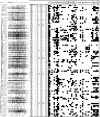mcr-1 Identified in Fecal Escherichia coli and Avian Pathogenic E. coli (APEC) From Brazil
- PMID: 33959114
- PMCID: PMC8093808
- DOI: 10.3389/fmicb.2021.659613
mcr-1 Identified in Fecal Escherichia coli and Avian Pathogenic E. coli (APEC) From Brazil
Abstract
Colisitin-associated resistance in bacteria of food producing animals has gained significant attention with the mcr gene being linked with resistance. Recently, newer variants of mcr have emerged with more than nine variants currently recognized. Reports of mcr associated resistance in Escherichia coli of poultry appear to be relatively limited, but its prevalence requires assessment since poultry is one of the most important and cheapest sources of the world's protein and the emergence of resistance could limit our ability to treat disease outbreaks. Here, 107 E. coli isolates from production poultry were screened for the presence of mcr 1-9. The isolates were collected between April 2015 and June 2016 from broiler chickens and free-range layer hens in Rio de Janeiro, Brazil. All isolates were recovered from the trachea and cloaca of healthy birds and an additional two isolates were recovered from sick birds diagnosed with colibacillosis. All isolates were screened for the presence of mcr-1 to 9 using PCR and Sanger sequencing for confirmation of positive genes. Additionally, pulse field gel electrophoresis (PFGE) analysis, avian fecal E. coli (APEC) virulence associated gene screening, plasmid replicon typing and antimicrobial resistance phenotype and resistance gene screening, were also carried out to further characterize these isolates. The mcr-1 gene was detected in 62 (57.9%) isolates (61 healthy and 1 APEC) and the mcr-5 gene was detected in 3 (2.8%) isolates; mcr-2, mcr-3, mcr-4, mcr-6, mcr-7, mcr-8, and mcr-9 were not detected in any isolate. In addition, mcr 1 and 5 positive isolates were phenotypically resistant to colistin using the agar dilution assay (> 8ug/ml). PFGE analysis found that most of the isolates screened had unique fingerprints suggesting that the emergence of colistin resistance was not the result of clonal dissemination. Plasmid replicon types IncI2, FIB, and B/O were found in 38, 36, and 34% of the mcr positive isolates and were the most prevalent replicon types detected; tetA and tetB (32 and 26%, respectively) were the most prevalent antimicrobial resistance genes detected and iutA, was the most prevalent APEC virulence associated gene, detected in 50% of the isolates. Approximately 32% of the isolates examined could be classified as APEC-like, based on the presence of 3 or more genes of APEC virulence associated path panel (iroN, ompT, hlyF, iss, iutA). This study has identified a high prevalence of mcr-1 in poultry isolates in Brazil, suggesting that animal husbandry practices could result in a potential source of resistance to the human food chain in countries where application of colistin in animal health is practiced. Emergence of the mcr gene and associated colisitin resistance in production poultry warrants continued monitoring from the animal health and human health perspective.
Keywords: Escherichia coli; antimicrobial resistance; broiler; colistin; layer; mcr; poultry E. coli.
Copyright © 2021 Barbieri, Pimenta, de Melo, Nolan, de Souza and Logue.
Conflict of interest statement
The authors declare that the research was conducted in the absence of any commercial or financial relationships that could be construed as a potential conflict of interest.
Figures




Similar articles
-
Genomic landscape of multi-drug resistant avian pathogenic Escherichia coli recovered from broilers.Vet Microbiol. 2020 Aug;247:108766. doi: 10.1016/j.vetmic.2020.108766. Epub 2020 Jun 27. Vet Microbiol. 2020. PMID: 32768218
-
Complete Genetic Analysis of Plasmids Carrying mcr-1 and Other Resistance Genes in Avian Pathogenic Escherichia coli Isolates from Diseased Chickens in Anhui Province in China.mSphere. 2021 Apr 14;6(2):e01135-20. doi: 10.1128/mSphere.01135-20. mSphere. 2021. PMID: 33853876 Free PMC article.
-
mcr-1 identified in Avian Pathogenic Escherichia coli (APEC).PLoS One. 2017 Mar 6;12(3):e0172997. doi: 10.1371/journal.pone.0172997. eCollection 2017. PLoS One. 2017. PMID: 28264015 Free PMC article.
-
[Avian pathogenic Escherichia coli (APEC)].Berl Munch Tierarztl Wochenschr. 2003 Sep-Oct;116(9-10):381-95. Berl Munch Tierarztl Wochenschr. 2003. PMID: 14526468 Review. German.
-
Mobile Colistin Resistance (mcr) Gene-Containing Organisms in Poultry Sector in Low- and Middle-Income Countries: Epidemiology, Characteristics, and One Health Control Strategies.Antibiotics (Basel). 2023 Jun 28;12(7):1117. doi: 10.3390/antibiotics12071117. Antibiotics (Basel). 2023. PMID: 37508213 Free PMC article. Review.
Cited by
-
Gram-negative bacilli carrying mcr gene in Brazil: a pathogen on the rise.Braz J Microbiol. 2023 Jun;54(2):1009-1020. doi: 10.1007/s42770-023-00948-w. Epub 2023 Mar 21. Braz J Microbiol. 2023. PMID: 36943639 Free PMC article. Review.
-
Occurrence and Genomic Characterization of mcr-1-Harboring Escherichia coli Isolates from Chicken and Pig Farms in Lima, Peru.Antibiotics (Basel). 2022 Dec 8;11(12):1781. doi: 10.3390/antibiotics11121781. Antibiotics (Basel). 2022. PMID: 36551438 Free PMC article.
-
Multidrug-resistant Escherichia coli isolated from free-range chickens in the Caatinga biome.Vet Res Commun. 2024 Oct;48(5):3475-3481. doi: 10.1007/s11259-024-10504-y. Epub 2024 Aug 19. Vet Res Commun. 2024. PMID: 39158807
-
The Occurrence and Genomic Characteristics of mcr-1-Harboring Salmonella from Retail Meats and Eggs in Qingdao, China.Foods. 2022 Nov 29;11(23):3854. doi: 10.3390/foods11233854. Foods. 2022. PMID: 36496661 Free PMC article.
-
Co-Occurrence of NDM-9 and MCR-1 in a Human Gut Colonized Escherichia coli ST1011.Infect Drug Resist. 2021 Aug 10;14:3011-3017. doi: 10.2147/IDR.S321732. eCollection 2021. Infect Drug Resist. 2021. PMID: 34413655 Free PMC article.
References
-
- Abdi-Hachesoo B., Asasi K., Sharifiyazdi H. (2017). Farm-level evaluation of enrofloxacin resistance in Escherichia coli isolated from broiler chickens during a rearing period. Comparat. Clin. Pathol. 26 471–476. 10.1007/s00580-017-2402-x - DOI
-
- Azizpour A., Saeidi Namin V. (2018). Investigation of antibiotic resistance patterns in Escherichia coli isolated from broiler chickens with colibacillosis to ten antibacterial agents commonly used in the Iranian poultry industry. J. Comparat. Pathobiol. Iran 14:59.
-
- Barbieri N. L., de Oliveira A. L., Tejkowski T. M., Pavanelo D. B., Matter L. B., Pinheiro S. R., et al. (2015). Molecular characterization and clonal relationships among Escherichia coli strains isolated from broiler chickens with colisepticemia. Foodborne Pathog. Dis. 12 74–83. 10.1089/fpd.2014.1815 - DOI - PubMed
LinkOut - more resources
Full Text Sources
Other Literature Sources
Miscellaneous

